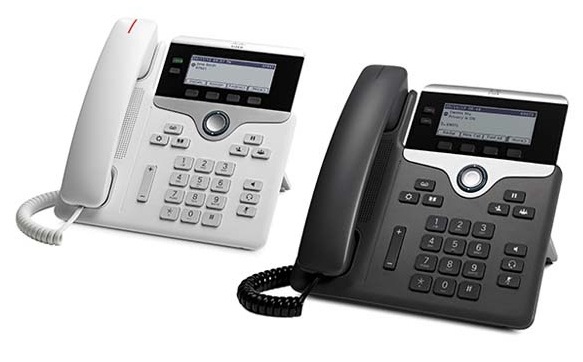Revolutionizing Communication: Exploring VOIP Phones in the Digital Age

In the ever-evolving landscape of communication technology, Voice over Internet Protocol (VOIP) phones have emerged as a game-changer, offering businesses and individuals a cost-effective and versatile alternative to traditional landline telephony. In this comprehensive analysis, we delve into the world of VOIP phones, examining their history, functionalities, benefits, applications, and the broader implications for modern communication. From enhancing collaboration and productivity to enabling seamless connectivity across geographies, VOIP phones have reshaped the way we communicate in the digital era.
The concept of VOIP technology dates back to the early days of the internet, where researchers and innovators explored ways to transmit voice communications over data networks. However, it was not until the late 1990s and early 2000s that VOIP technology became commercially viable, driven by advancements in internet infrastructure, compression algorithms, and voice encoding techniques. The introduction of dedicated VOIP protocols, such as Session Initiation Protocol (SIP) and Real-Time Transport Protocol (RTP), paved the way for the development of VOIP phones capable of transmitting high-quality voice calls over the internet. Today, VOIP phones are widely used by businesses, governments, and individuals around the world, offering a cost-effective and feature-rich solution for voice communication.
Functionalities and Features: Empowering Seamless Communication
VOIP phones offer a wide range of functionalities and features designed to meet the diverse needs and requirements of users across industries. At their core, VOIP phones enable users to make and receive voice calls over the internet, using IP networks to transmit voice packets in real-time. In addition to voice calling, VOIP phones may support additional communication modes, such as video calling, instant messaging, and conferencing, enabling users to collaborate and communicate seamlessly across different channels. Advanced features such as call forwarding, voicemail, call recording, and auto-attendant capabilities further enhance the usability and versatility of VOIP phones, allowing users to customize their communication experience to suit their preferences and workflows.
Applications Across Industries: From Small Businesses to Enterprise Solutions
VOIP phones find application across a wide range of industries and sectors, serving the communication needs of businesses, government agencies, educational institutions, healthcare providers, and individuals alike. In the business sector, VOIP phones are used to support internal and external communication, enabling employees to stay connected and collaborate effectively regardless of their location. Small businesses and startups benefit from the scalability and affordability of VOIP phone solutions, which offer enterprise-grade features and functionality at a fraction of the cost of traditional phone systems. In large enterprises, VOIP phones provide a flexible and cost-effective alternative to legacy telephony systems, supporting complex communication workflows and integration with other business applications and systems.
Benefits of VOIP Phones: Driving Efficiency, Cost Savings, and Flexibility
The adoption of VOIP phones offers numerous benefits for organizations and individuals seeking to optimize their communication infrastructure and workflows. One of the primary benefits is cost savings, as VOIP phones leverage existing internet connectivity to transmit voice calls, eliminating the need for expensive dedicated phone lines and long-distance charges associated with traditional landline telephony. Moreover, VOIP phones offer greater flexibility and mobility, enabling users to make and receive calls from anywhere with an internet connection, using a variety of devices such as desktop computers, laptops, smartphones, and tablets. Additionally, VOIP phones support advanced features such as call routing, virtual extensions, and integration with business applications, empowering organizations to streamline communication processes, improve customer service, and drive operational efficiency.
Challenges and Considerations: Addressing Quality, Security, and Reliability
Despite their many benefits, VOIP phones also raise challenges and considerations that must be carefully addressed to ensure optimal performance, security, and reliability. One of the main challenges is call quality, as voice calls transmitted over the internet may be subject to latency, jitter, and packet loss, resulting in degraded audio quality and dropped calls. Organizations must implement Quality of Service (QoS) measures, such as bandwidth management, traffic prioritization, and network optimization, to mitigate these issues and ensure a consistent and reliable communication experience. Moreover, security concerns such as eavesdropping, unauthorized access, and denial-of-service (DoS) attacks pose risks to VOIP phone systems, requiring organizations to implement robust security measures, such as encryption, authentication, and access controls, to protect sensitive communications and data. Additionally, reliability and uptime are critical considerations for VOIP phone systems, as any downtime or service disruptions can impact business operations and customer satisfaction. Organizations must invest in redundant infrastructure, backup solutions, and disaster recovery plans to minimize the risk of service outages and ensure continuity of communication.
Future Outlook: Embracing Innovation and Connectivity
Looking ahead, the future of VOIP phones looks promising, with continued advancements in technology, connectivity, and integration expected to drive further growth and innovation in the VOIP market. As internet infrastructure continues to improve and broadband penetration rates increase globally, VOIP phones will become even more accessible and ubiquitous, enabling businesses and individuals to communicate seamlessly and cost-effectively across borders and time zones. Moreover, the convergence of VOIP technology with other emerging trends such as cloud computing, artificial intelligence, and the Internet of Things (IoT) will open up new possibilities for innovation and connectivity, transforming the way we communicate and collaborate in the digital age. By embracing these trends and harnessing the power of VOIP phones to drive efficiency, flexibility, and connectivity, organizations and individuals can unlock new opportunities for growth, innovation, and success in an increasingly interconnected world.
